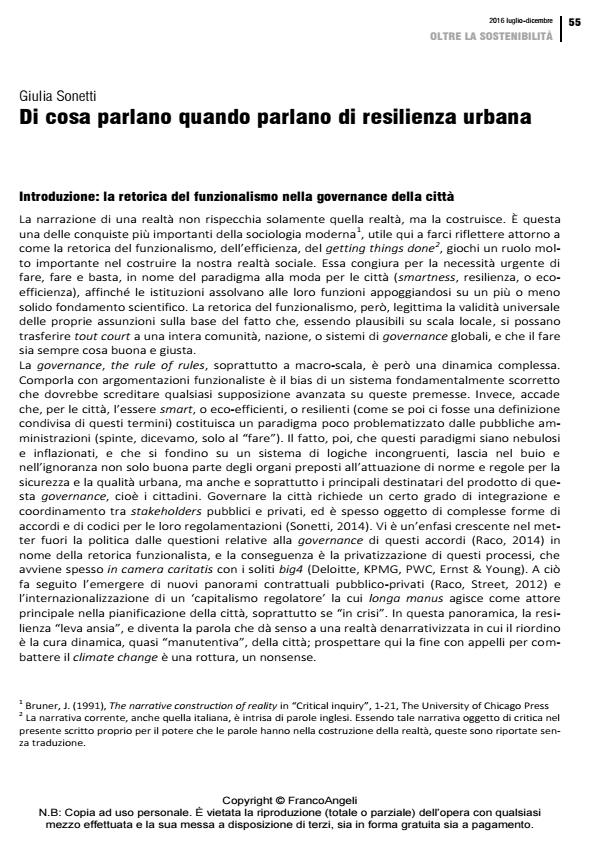Di cosa parlano quando parlano di resilienza urbana
Titolo Rivista CRIOS
Autori/Curatori Giulia Sonetti
Anno di pubblicazione 2016 Fascicolo 2016/12
Lingua Italiano Numero pagine 12 P. 55-66 Dimensione file 1406 KB
DOI 10.3280/CRIOS2016-012006
Il DOI è il codice a barre della proprietà intellettuale: per saperne di più
clicca qui
Qui sotto puoi vedere in anteprima la prima pagina di questo articolo.
Se questo articolo ti interessa, lo puoi acquistare (e scaricare in formato pdf) seguendo le facili indicazioni per acquistare il download credit. Acquista Download Credits per scaricare questo Articolo in formato PDF

FrancoAngeli è membro della Publishers International Linking Association, Inc (PILA)associazione indipendente e non profit per facilitare (attraverso i servizi tecnologici implementati da CrossRef.org) l’accesso degli studiosi ai contenuti digitali nelle pubblicazioni professionali e scientifiche
Resilience is the new black. Overworked as the previous fashionable adjectives for XXI century cities, now more than ever self-labeling smarter or greener according to the available market levers, we should try to frame this term also outside the functionalistic rhetoric. In the first part of the paper, we highlight the main current resilience translations into facts, narrated and dragged up in the theoretical frames of the disciplines more or less related to the urban dimension. In the second part, risks connected to the perverse use of the resilience metaphor are stressed. Cities - and citizens - may be honoured for being adaptable to changes, but this could have been done in order to preserve the current state of equilibrium among powers and stakeholders of the actual urban governance
- The Use of Big Data in Regenerative Planning Dorota Kamrowska-Zaluska, Hanna Obracht-Prondzyńska, in Sustainability /2018 pp.3668
DOI: 10.3390/su10103668 - Exploring the Potentials of ICT Tools for Human-Centric Regenerative Design Giulia Sonetti, Emanuele Naboni, Martin Brown, in Sustainability /2018 pp.1217
DOI: 10.3390/su10041217
Giulia Sonetti, Di cosa parlano quando parlano di resilienza urbana in "CRIOS" 12/2016, pp 55-66, DOI: 10.3280/CRIOS2016-012006